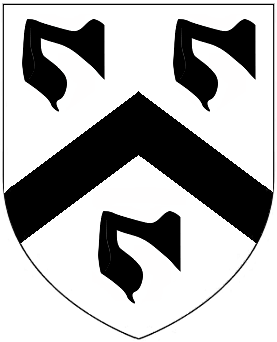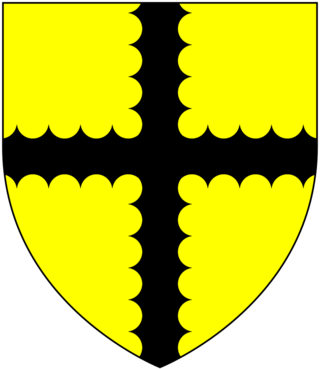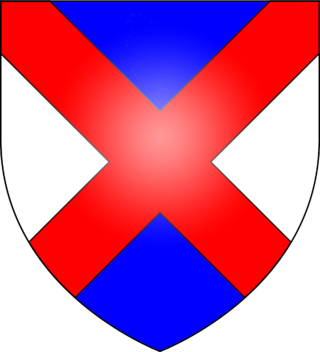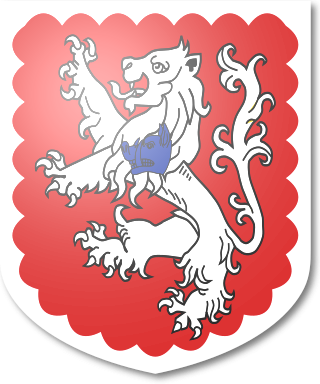Swan baronets, of Southfleet (1666)

- Sir William Swan, 1st Baronet (1631–1680)
- Sir William Swan, 2nd Baronet (1667–1712)
The Swan Baronetcy, of Southfleet in the County of Kent, was a title in the Baronetage of England. It was created on 1 March 1666 for William Swan. The title became extinct on the death of the second Baronet in 1712.


Earl of Chichester is a title that has been created three times, twice in the Peerage of England and once in the Peerage of the United Kingdom. The current title was created in the Peerage of the United Kingdom in 1801 for Thomas Pelham, 2nd Baron Pelham of Stanmer.

Lord Napier, of Merchistoun, is a title in the Peerage of Scotland. It was created in 1627 for Sir Archibald Napier, 1st Baronet. Earlier that year, he already held the Napier Baronetcy, of Merchistoun in the County of Midlothian, created in the Baronetage of Nova Scotia. The titles remained united until 1683, when the Baronetcy became dormant. It was revived in the early 19th century and is now held by another branch of the Napier family. Between 1683 and 1686, the Lords of Napier also held the Nicolson Baronetcy, of Carnock in the County of Stirling, and since 1725 the Scott Baronetcy, of Thirlestane in the County of Selkirk, both baronetcies created in the Baronetage of Nova Scotia. The latter one is held till today. Additionally, the tenth Lord was created Baron Ettrick, of Ettrick in the County of Selkirk in the Peerage of the United Kingdom on 16 July 1872.

Baron Bagot, of Bagot's Bromley in the County of Stafford, is a title in the Peerage of Great Britain. It was created on 12 October 1780 for Sir William Bagot, 6th Baronet.
Baron Wrottesley, of Wrottesley in the County of Stafford, is a title in the Peerage of the United Kingdom. It was created on 11 July 1838 for Sir John Wrottesley, 9th Baronet. He was a Major-General in the Army and also represented Lichfield, Staffordshire and Staffordshire South in House of Commons. The Wrottesley family's original patronymic was 'de Verdun', which meant that the creation of the title Baron Wrottesley represented the third barony created by a branch of the de Verdun family in England. The other two were established by Theobald de Verdun, 1st Baron Verdun of Alton Castle and Sir John de Verdon, 1st Baron Verdon, lord of Brixworth in Northamptonshire and Bressingham in Norfolk.

The Master of the Household is the operational head of the "below stairs" elements of the Royal Households of the United Kingdom. The role has charge of the domestic staff, from the Royal Kitchens, the pages and footmen, to the housekeeper and their staff.

Baron Masham is a title that has been created three times, once in the Peerage of Great Britain and twice in the Peerage of the United Kingdom. It was first created in the Peerage of Great Britain in 1712 when the courtier Samuel Masham was made Baron Masham, of Otes. In 1723 he also succeeded as fourth Baronet of High Lever. The barony became extinct on the death of the second Baron in 1776. The Masham baronetcy, of High Lever in the County of Essex, was created by James I in the Baronetage of England on 20 December 1621 for Samuel Masham. The third Baronet was Member of Parliament for Essex. The baronetcy became extinct along with the barony in 1776.

Baron Mansel, of Margam in the County of Glamorgan, was a title in the Peerage of Great Britain. It was created on 1 January 1712 for Sir Thomas Mansel, 5th Baronet, previously Member of Parliament for Cardiff and Glamorganshire. His ancestor had been created a Baronet, of Margam in the County of Glamorgan, in the Baronetage of England on 22 May 1611. The fourth Baronet represented Glamorgan in the House of Commons. The fourth Baron sat as Member of Parliament for Cardiff. On his death 29 November 1750 the barony and baronetcy became extinct.

Baron Mohun of Okehampton was a title in the Peerage of England. It was created on 15 April 1628 for John Mohun, formerly a Member of Parliament for Grampound, Cornwall.
There have been six baronetcies created for persons with the surname Thomas, three in the Baronetage of England, one in the Baronetage of Great Britain and two in the Baronetage of the United Kingdom. Two of the creations are extant as of 2016.

The Glynne Baronetcy, of Bicester in the County of Oxford, was a title in the Baronetage of England. It was created on 20 May 1661 for William Glynne, the former Member of Parliament for Carnarvon. He was the son of Sir John Glynne, Lord Chief Justice during the Commonwealth. The second Baronet sat as Member of Parliament for Oxford University and Woodstock. The sixth Baronet was Member of Parliament for Flintshire and Flint. The title became extinct on the death in 1874 of Sir Stephen Glynne, 9th Baronet. The family estates, including Hawarden Castle in Flintshire, had been rescued from bankruptcy by the wealth of Sir John Gladstone, whose son William Ewart Gladstone had married the ninth Baronet's sister Catherine; on his death, they passed to Catherine and William's eldest son William Henry Gladstone.
The Villiers Baronetcy, of Brooksby, in the County of Leicester was created in the baronetage of England on 19 July 1619 for William Villiers of Brokesby, Leicestershire. A member of the prominent Villiers family, he was the son of George Villiers, brother of Sir Edward Villiers,, and the half-brother of George Villiers, 1st Duke of Buckingham, Christopher Villiers, 1st Earl of Anglesey, and John Villiers, 1st Viscount Purbeck. He was high sheriff of Leicestershire in 1609. The third baronet sat as member of parliament for Leicester from 1698 to 1701. On his death in 1712 the title became extinct.
There have been two baronetcies created for members of the Reade family, both in the Baronetage of England. Both creations are now extinct.

The Gage, later Rokewode-Gage Baronetcy, of Hengrave in the County of Suffolk, was a title in the Baronetage of England. It was created on 15 July 1662 for Edward Gage. The eighth Baronet assumed in 1843 by Royal licence the additional surname of Rokewode in compliance with the will of his uncle, John Gage Rokewode. The title became extinct on the death of the ninth Baronet in 1872.
There have been two baronetcies created, both in the Baronetage of England, for members of the Twysden family of Kent.

The Horton Baronetcy, of Chadderton in the County of Lancaster, was a title in the Baronetage of Great Britain. It was created on 22 January 1764 for William Horton, High Sheriff of Lancashire in 1764. The second Baronet was High Sheriff of Lancashire in 1775. The title became extinct on the death of the third Baronet in 1821.

There have been four baronetcies created for persons with the surname Martin, one in the Baronetage of England, one in the Baronetage of Great Britain and two in the Baronetage of the United Kingdom. All creations are now extinct.
William or Bill Swan may refer to:
The Button Baronetcy, of Alton in the County of Wiltshire, was a title in the Baronetage of England. It was created on 18 March 1622 for Sir William Button, Member of Parliament for Morpeth and Wiltshire. The third Baronet was High Sheriff of Wiltshire from 1670 to 1671. The title became extinct on the death of the fourth Baronet in 1712.
The Denham of Westshield Baronetcy was created on 31 January 1693 in the Baronetage of Nova Scotia for William Denham.